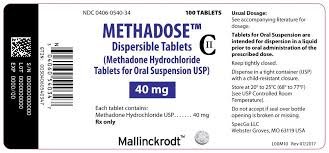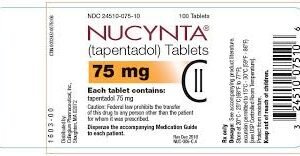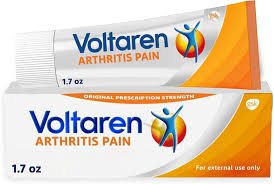Description
Methadose: Overview, Uses, and Benefits
Methadose is a brand name for methadone, a synthetic opioid used primarily in the treatment of opioid use disorder (OUD) and for pain management. As part of a methadone maintenance therapy program, Methadose helps individuals recover from addiction to opioids such as heroin or prescription painkillers by reducing withdrawal symptoms and cravings. Methadone, when used properly, is an effective part of the strategy to manage opioid dependence and provide long-term stability for individuals in recovery.
In this article, we will delve into the composition, uses, mechanism of action, benefits, side effects, and precautions associated with Methadose.
Composition of Methadose
Methadose contains methadone hydrochloride as the active ingredient, which is the primary medication responsible for its effects. The medication is formulated to be taken orally, typically in the form of a liquid or tablet, depending on the patient’s needs and the prescribing doctor’s recommendation. The drug is available in several concentrations, with typical doses ranging from 5 mg to 40 mg per dose.
In addition to methadone hydrochloride, the inactive ingredients (excipients) in the formulation may include:
- Flavoring agents (for liquid forms) to make the medication more palatable.
- Preservatives to maintain the stability of the solution.
- Binders and fillers for tablet formulations to ensure consistency and integrity of the dose.
Common Uses of Methadose
Methadose is prescribed primarily for two key therapeutic purposes:
1. Opioid Use Disorder Treatment (Methadone Maintenance Therapy)
Methadose is most commonly used in the treatment of opioid use disorder (OUD). Methadone helps individuals who are addicted to opioids (such as heroin, prescription painkillers, or fentanyl) by:
- Reducing withdrawal symptoms: Methadone mitigates the physical symptoms of opioid withdrawal, such as muscle aches, sweating, nausea, and anxiety.
- Decreasing cravings: Methadone helps reduce the intense cravings for opioids that people with OUD experience, which can make recovery more challenging.
- Preventing relapse: By providing a controlled, long-acting opioid, Methadose reduces the risk of relapse and the temptation to use illicit opioids.
Methadone maintenance therapy is typically part of a comprehensive treatment plan that includes counseling, therapy, and support to help individuals achieve long-term recovery from opioid addiction.
2. Pain Management
While Methadose is primarily used for opioid dependence, it also serves as a pain management option for individuals with chronic pain, particularly in cases where other pain medications have been ineffective or when the patient has a history of opioid addiction. Methadone is a potent opioid analgesic (pain reliever) and can be prescribed for:
- Chronic pain (e.g., cancer pain, severe back pain)
- Post-surgical pain (for long-term pain management)
- Neuropathic pain (pain caused by nerve damage)
Because of its long half-life, Methadose provides sustained pain relief, often requiring only once-daily dosing.
Mechanism of Action
Methadose works by interacting with opioid receptors in the brain and spinal cord. Specifically, it is a full agonist at the mu-opioid receptors, which are responsible for producing the analgesic (pain-relieving), euphoric, and sedative effects associated with opioid drugs.
- Pain Relief:
- By binding to these receptors, Methadose reduces the transmission of pain signals, effectively providing pain relief.
- Opioid Dependence Treatment:
- For individuals with opioid use disorder, Methadose helps to stabilize the body’s opioid receptors without producing the intense euphoria or “high” that illicit opioids cause. It acts as a long-acting opioid, preventing withdrawal symptoms and reducing cravings for other opioids, which in turn helps individuals to focus on their recovery.
- Methadose has a long half-life, meaning it stays in the body for an extended period. This provides consistent, long-lasting effects, and the medication is typically taken once a day to maintain stable levels in the blood.
Benefits of Methadose
- Effective Treatment for Opioid Use Disorder:
- One of the primary benefits of Methadose is its ability to help people with opioid use disorder achieve stability and reduce the risk of relapse. The medication prevents the physical symptoms of withdrawal and cravings, allowing individuals to break free from their dependence on illicit opioids.
- Pain Management:
- Methadose is also effective for managing moderate to severe chronic pain, particularly for individuals who have developed a tolerance to other opioids. It is an important option for people who require long-term pain relief and need an opioid with a controlled, predictable release.
- Long-Lasting Effects:
- Because of its long half-life, Methadose can provide consistent, long-acting relief. This is particularly helpful in preventing withdrawal and in managing pain over an extended period, with fewer doses required.
- Decreased Risk of Euphoria:
- Unlike short-acting opioids, Methadose has a slower onset of action, which reduces the likelihood of euphoria or abuse. It is less likely to cause a “high” when taken as prescribed, making it a safer option for those in treatment for opioid addiction.
- Convenient Dosing:
- For individuals undergoing methadone maintenance therapy, Methadose can be taken once a day, providing convenience and promoting medication adherence. This is particularly helpful for patients who have been on opioid treatment programs for extended periods.
Side Effects of Methadose
As with all opioids, Methadose can cause side effects, particularly if not used as prescribed. Common and serious side effects include:
- Common Side Effects:
- Drowsiness or sedation
- Nausea and vomiting
- Constipation
- Sweating
- Dizziness or lightheadedness
- Dry mouth
- Serious Side Effects:
- Respiratory depression: Methadose can cause slow or shallow breathing, which can be dangerous, especially when combined with other CNS depressants (e.g., alcohol or benzodiazepines).
- Heart arrhythmias: Methadone can cause QT interval prolongation, which can lead to life-threatening arrhythmias (abnormal heart rhythms).
- Overdose: Taking too much Methadose can result in overdose, with symptoms including unconsciousness, slow breathing, and pinpoint pupils. Overdose can be fatal, particularly if combined with other substances.
- Allergic reactions: Some people may experience severe allergic reactions, including swelling, itching, rash, or difficulty breathing.
Precautions and Considerations
- Risk of Addiction and Misuse:
- Although Methadose is use to treat opioid addiction, it is still an opioid and carries the risk of dependence, tolerance, and addiction. It is important that it is take only as prescribe and under the supervision of a healthcare provider.
- Drug Interactions:
- Methadose can interact with other medications, especially those that depress the central nervous system (CNS) (e.g., alcohol, benzodiazepines, sedatives). Combining Methadose with other CNS depressants can increase the risk of respiratory depression and overdose.
- Pregnancy and Breastfeeding:
- Methadose should be use during pregnancy only if the benefits outweigh the risks. It can cause neonatal withdrawal symptoms if take in the later stages of pregnancy. Methadone also passes into breast milk, so it should be use with caution while breastfeeding.
- Liver and Kidney Function:
- Methadose should be use with caution in patients with liver or kidney disease, as methadone is metabolize in the liver and excrete through the kidneys.
- Monitoring:
- Patients using Methadose for opioid maintenance therapy should be monitored closely for signs of misuse, side effects, and the development of tolerance.
Conclusion
Methadose is a critical medication in the treatment of opioid use disorder and the management of chronic pain. Its long-acting properties provide sustained relief from withdrawal symptoms and pain, making it an effective part of a comprehensive treatment plan. However, like all opioids, it carries risks, including the potential for addiction, overdose, and serious side effects.






Reviews
There are no reviews yet.